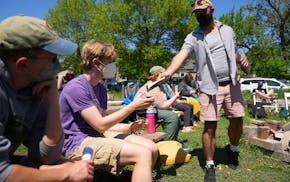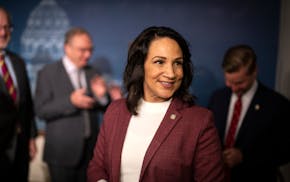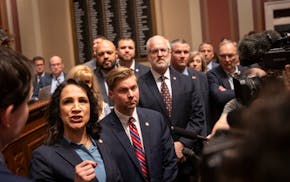St. Paul leaders are drafting the blueprint for millions of dollars in future investments in one of the city's crown jewels: its nationally recognized parks system.
City staff are preparing a new Parks and Recreation System Plan that maps out the next decade of improvements — changes to meet evolving demands and spending for parks, recreation centers, athletic fields and trails. The plan was last updated in 2010.
"The system plan is a guide for our work for the future to make sure we are meeting the needs of our community," said Parks and Recreation Director Andy Rodriguez. "Those needs evolve over time from what we were doing in 2010. Things have changed pretty significantly since then in terms of how people recreate and use our space."
Parks leaders said they hope to have the systems plan completed by the first quarter of 2023, and the city has hired outside firm Visible City to collect and analyze data on parks usage, program participation and demographics. One question officials plan to contemplate: Do the fields and facilities available to the public match current demand and emerging trends?
"Baseball is still popular, but is it as prevalent as it once was back in 2010?" Rodriguez said. "You hear about things like pickleball and other emerging sports and the needs for those uses."
Parks and Recreation, which includes 182 parks, 26 community centers, Como Park Zoo and Conservatory and 120 miles of trails, is one of the city's largest assets. The $76.5 million 2023 budget that Mayor Melvin Carter proposed last week would amount to nearly 9% of the city's total budget.
The parks are a point of pride for the capital city: St. Paul Parks and Recreation was ranked America's second-best urban park system this year, according to the Trust for Public Land's annual ParkScore Index.
"People covet their parks. It's what people look for when they move to a new home or a new neighborhood: 'How close is a park?' 'Where can I bring my kids and my family?' " Rodriguez said.
Parks leaders say it's too soon to predict how much the city could spend on parks improvements during the next decade, but Carter proposed more than $20 million in parks capital improvements for 2023 alone.
"Our system is huge. We are the largest public landowner in the city," said Parks Chief Financial Officer Brad Meyer. "We have a huge $600 million capital asset portfolio that we manage and maintain."
Multiple major projects in the 2010 plan have been completed, including the Arlington Hills Community Center, the renovation of the Palace Community Center in the West Seventh neighborhood and the Frogtown Recreation Center. Construction of the North End Community Center wasn't mentioned in the 2010 plan but could begin later this year.
Public engagement for the new parks plan includes an online survey and connecting with residents at community events, as well as some planned community meetings this fall. The nonprofit St. Paul Parks Conservancy and City Council members will also get a say.
Like St. Paul's comprehensive plan — the long-range planning document that guides development and investment citywide — the parks plan will focus on equitable allocation, environmental sustainability, economic viability, healthy community partnerships and adjusting programming and space to changing needs.
"We know going into this, neighborhoods of color have less parkland per capita than other neighborhoods," said Michael-jon Pease, the Parks Conservancy's executive director. "There is a shared focus on bridging those equity gaps."
The conservancy is pushing for investment in downtown green space, as well as improvements to parks on the city's East Side, from sprawling Swede Hollow to little Margaret Park in the Dayton's Bluff neighborhood.
"What are those unsung parks that really make a difference for a lot of working families?" Pease said.
Parks leaders say they expect debate as they hammer out the final plan.
"You try to please everyone, but you won't please everyone," Meyer said. "But I do think with this exhaustive community-engagement process … we will hopefully have less room for surprises and more room for authentic engagement."

Want to share info with the Star Tribune? How to do it securely

'Safe recovery sites' would offer syringes, naloxone and more to people using drugs. The plan could be in peril.
New Minnesota GOP leaders seek peace with party's anti-establishment wing

Who is Republican Lisa Demuth, Minnesota's first House speaker of color?

